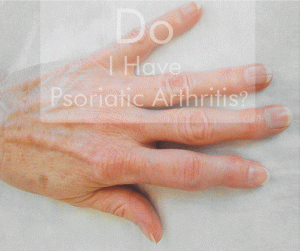 What is Psoriatic Arthritis?
What is Psoriatic Arthritis?
Psoriatic arthritis is a type of inflammatory arthritis that occurs in thirty percent of patients suffering from long standing Psoriasis. Like Psoriasis, this is also believed to be auto-immune, where one’s immunity attacks our own body’s cells.
What are the Symptoms of Psoriatic Arthritis?
- Pain, swelling and stiffness of one or multiple joints of the body which can range from mild to moderate intensity
- Involvement of the finger joints (especially the joint nearer the tip of the finger) is a characteristic feature
- Commonly associated with seronegative arthritis (RA factor when tested is negative even in the presence of symptoms)
- Joints affected may be warm to touch
- Pain in and around the ankle and sacrum
- Yellow nails with pitting, scaling and separation of the nail from nail bed
- It may be associated with HLAB27 related joint disease of the spine.
- Psoriatic scaly patches predominantly on certain specific surfaces (called extensor surfaces)
Will I Develop Psoriatic Arthritis Symptoms?
The thought of psoriatic arthritis immediately comes to the mind of persons suffering from psoriasis, if they experience the slightest joint pain. If you are already suffering from psoriasis you may be prone to develop psoriatic arthritis symptoms in the future. Nevertheless, all individuals having psoriasis may not always go on to develop psoriatic arthritis.
Each individual possesses tendencies to develop certain diseases. These tendencies or diathesis come from the genetic predispositions (family history), susceptibility and general immunity of an individual. Currently, lifestyle has become add on factor to cause a certain disease to an individual. Hence, it becomes very dilemmatic to say whether a person is definitively going to get a particular disease or not!
It often becomes difficult to distinguish psoriatic arthritis from other causes of joint pains including rheumatoid arthritis, gout or osteoarthritis. One can go for a detailed history and investigations in order to rule out the other possible diseases.
How can I monitor for Psoriatic Arthritis symptoms?
- Psoriatic arthritis commonly shows up between 30 to 50 years of age. It may also start in childhood
- Both men and women are equally affected
- Psoriasis mostly comes first and then arthritis, but the pattern is not always fixed
- Look out for involvement of joints equally on both the sides (E.g.; both elbows, both the knees) which is seen in symmetric type of psoriatic arthritis. Nevertheless, occasionally these symptoms may be visible in any one joint as well (Asymmetric psoriatic arthritis)
- Symptoms may come up gradually, in some individuals they may appear suddenly
- Be keen on observing morning stiffness of joints, fatigue and inflammation
- People having high cholesterol, high blood pressure, heart disease, diabetes and who follow a stressful and sleep deprived lifestyle are prone to encounter psoriatic arthritis.
- Above all if you have a family history of psoriasis or psoriatic arthritis, be alert if you are putting on weight and adding to the strain on your joints.
If you perceive any of the above alarming signs set a “Red Alert for yourself”. Include exercise and diet which are to be followed regularly in order to boost your immunity and prevent psoriatic arthritis. Early diagnosis and treatment are critical to relieve pain, inflammation and prevent progressive joint damage.
Homoeopathic treatment is a good option to take care of Psoriatic Arthritis symptoms. Dr Rajesh Shah’s research based homoeopathic medicines for psoriatic arthritis have shown good results in hundreds of patients. Leave us your contact details in the form below and we will get back to you!

 What is Psoriatic Arthritis?
What is Psoriatic Arthritis?



lipitor 40mg uk lipitor usa order atorvastatin pill
proscar 1mg us propecia drug order diflucan generic
buy cipro – augmentin 625mg drug augmentin 375mg for sale
ciplox online buy – order tinidazole 300mg pill buy generic erythromycin
metronidazole uk – cheap terramycin 250mg order azithromycin without prescription
ivermectin for humans for sale – oral cefixime 200mg order tetracycline pills
metformin drug – oral cipro lincomycin brand
clozaril uk – order frumil 5 mg for sale buy pepcid medication
buy clomipramine 50mg pills – buy aripiprazole 30mg doxepin where to buy
augmentin 375mg over the counter – order myambutol 1000mg online cheap cipro 500mg us
buy zithromax 250mg online cheap – order flagyl 400mg pills order ciprofloxacin 500 mg for sale
where to buy ivermectin for humans – where can i buy doxycycline buy cefaclor 500mg generic
depo-medrol brand name – cetirizine 5mg canada order astelin 10 ml online
generic metformin – acarbose without prescription order precose 50mg without prescription
semaglutide 14 mg pills – buy semaglutide 14mg pills buy desmopressin without a prescription
famciclovir 500mg uk – zovirax 400mg sale buy valaciclovir 1000mg pill
buy lopressor without prescription – buy nifedipine medication adalat for sale